The world of animal trainers is divided.
You might not be aware of that rift, but it’s there. It took me some time to catch on to it, myself. Basically, there are two animal trainer camps, and they’re hardly on speaking terms.
Actually, there are at least two camps. Camps within camps, perhaps, even. It’s not the purpose of this blog post to define or analyze all the potential animal training fractions, however.
My guess is, as you look at that image, you agree more with one of those stances than the other.
Am I right?
So what? What’s the issue with camps? You may ask.
Well, I see two problems with this infected split in the ranks of animal trainers:
- Some people waste a lot of time being annoyed, feeling resentment towards, or even verbally attacking the other camp, although perhaps the death toll is low.
Think of all the great things we could be doing instead!
- Animals’ welfare is reduced because some animal trainers are using suboptimal techniques. In my opinion, some animals are suffering or having to be euthanized either as a result of unfortunate training choices, or because better solutions were not investigated.
I think we can all agree on that, even if we may not agree on which training camp is the better one.
Yes, I’m leaning heavily towards one of those camps, but I’m not an extremist. However, the main objective of this blog isn’t to convince people to join my side.
Rather, it’s about how to bridge the gap and start communicating.
I think that we can learn something from everyone, including people from the other camp – so my purpose with this post is for us to open the doors and start a dialogue.
I think that by reducing the animosity and saying hi, people in both camps may feel better and pay attention to how their training choices influence their animals’ welfare.
That’s an important first step, win-win, regardless of whether anyone converts.
Anyway.
So.
Here’s the thing.
The reason I’m writing this.
I just attended the 2nd Animal behaviour and training conference (Woof! 2017) where many of the presenters discussed this unfortunate situation, adding several perspectives. This got me thinking, and I had some ideas that I felt were worthwhile to share.
As you can guess from the number of exceptional speakers and the thought-provoking content that they shared, some of which you’ll find below, Woof! was a great conference. Not to mention it’s the only conference I’ve attended where there was a spontaneous conga line dancing through the room in between presentations.
I saved a video spot for the conga-dance here in case someone filmed it and was willing to share, but then I realized that not everyone would be comfortable showing their goofy dance moves to the world, not to mention that GDPR would have a fit. So, you’ll just have to imagine it.
Below I’ll paraphrase important concepts shared by some of the presenters, and bring their ideas together. They did not speak in the order presented below, and often their main topic was about something altogether different. I may have misunderstood some of what they said; if so I do hope someone will let me know..!
What we’re doing and why it’s not working
Conference organizer Chirag Patel (Domesticated Manners) said:
“Don’t punish the offering of information.”
Both camps are guilty of this. We explain our stance in a somewhat annoyed and condescending tone of voice, and the reply is some variation of “yeah, but..!”, and then the other proceeds to explain how wrong our technique or attitude is.
The problem with this approach is that it shuts down further communication. Barriers go up, and the true exchange of information is over before it even began. Both sides walk away convinced that the other is wrong, having learned nothing.
So berating the other is out. What to do, then?
How to change someone’s mind
Susan Friedman (Behavior Works) said:
“Don’t change minds, bring information to the table.”
That’s a very important reminder. We can’t change people’s minds. They change their minds on their own. Actually, they activate other frames, which will be discussed below.
What we can do is provide them with information, and explain our values – and then they might at least be willing to consider our perspective.
But it’s so tempting to provide information in the wrong way.
We try to explain. We talk about facts. And often, our efforts are in vain.
Why?
I can think of at least three reasons. Let’s start with one that wasn’t discussed at the conference.
Cognitive dissonance
I mentioned that animal welfare is potentially affected by training decisions.
And that one training camp is more likely to have an adverse effect on animal welfare.
Which camp would you rather be in?
That’s a no-brainer for most people – there’s no doubt in my mind that both camps care about the welfare of their animals.
And so the mere suggestion that what you’re doing may cause suffering will cause cognitive dissonance, a type of mental stress that will lead to avoiding certain situations.
It’s natural to avoid having conversations where someone suggests that you’re causing suffering to animals.
I realize it may be very uncomfortable reading this, and that I might have lost some of my readers already.
For those of you still here; clearly, if we want to maintain dialogue, we can’t make people feel bad about previous choices. If we do, they’ll tune out and walk away.
Don’t make people feel guilty about what they’re doing.
Instead, find the common ground.
At the conference, two additional reasons why providing information may be problematic were discussed.
The problem with overwhelm
Jean Donaldson (The Academy for Dog Trainers) said:
“They need needles; we give them haystacks.”
We overwhelm people with too much information, and most of it is unnecessary.
Guilt and overwhelm is not all. The biggest problem may be that the information we provide isn’t understood by the other person, since we’re from different camps.
Or rather, from different frames.
How frames influence behaviour
Alexandra Kurland (The Clicker Center) said:
“When people view the world from a completely different perspective, or frame, facts don’t make sense if they’re outside the person’s frame of reference.”
In other words, the different animal trainer camps aren’t communicating well because it’s as if we’re speaking different languages and facts presented by one camp don’t make sense to the other camp.
Ok.
Let’s summarize.
We overwhelm people with too much information, or flood them with guilt, both of which causes them to shut down or walk away.
But in addition, the facts we present may be inaccessible. Like taking the wrong turn when looking for the lecture hall, and stumbling on an advanced lecture on quantum mechanics.
No doubt, for some people, advanced quantum mechanics make perfect sense. But for most of us, we can’t immediately go from literacy (sort of understanding basic concepts) to fluency (actually using those concepts) without some sort of transition, or shift.
You may think: animal training isn’t exactly quantum mechanics.
How hard can it be? Start with the easy bits! Duh!
But here’s the interesting thing.
The problem may be not that the facts are hard to understand, but that the underlying values of the different frames make the facts from the other frame inaccessible. Frames are mental structures that help us understand the world, and as Alexandra Kurland suggests in this blog post, different animal trainer camps inhabit different frames.
Sound confusing?
Let’s try an illustration.
The term “control” means completely different things to the two trainer frames. The dominance-based trainer is likely to use the term control to discuss how the trainer controls the animal’s behaviour or its access to the environment.
The positive reinforcement-based trainer is more likely to discuss how the animal can control its environment. Empowerment and choice are likely to be mentioned in the same sentence.
Same word, vastly different meaning.
Because of values.
This frame-related confusion, in addition to overwhelm and guilt, makes it difficult to use pure facts to get people to change their behaviour.
Well, if that’s not annoying, I don’t know what is. If we’re in different frames, we can’t communicate very well.
But wait, if people are in the same frame, they can communicate well.
Can we help people to shift frames, then?
…Yes we can!
That shift is easier accomplished by evoking values rather than stating facts or numbers.
Achieve the shift, and the other person will be ready to hear your facts. As long as you don’t overwhelm them, and don’t play the guilt card. Of course there are other cognitive biases, too, that will influence whether we accept and integrate new information, or whether we reject it.
One thing that wasn’t discussed at the Woof! conference is the mere exposure effect, but I think it could be a useful concept when thinking about how to help people shift frames.
The mere exposure effect
You’re buying food for your animal, and there’s two varieties available. One of them, you’ve never seen before, the other is a common brand. The quality and price is the same. Will you choose the new product, or the one you’re familiar with?
Generally speaking, people tend to resist change and novelty, and prefer the familiar to the unknown. When you’re exposed to something over and over, it gradually becomes familiar.
Through mere exposure, or the familiarity principle, the unknown becomes well-known, and preference develops. Marketers know this well; that’s one of the purposes of advertisements: to create the preference induced by the mere exposure-effect.
Preference involves value, and that’s needed to make the shift of frames, remember..?
Here’s a twist on that – one that should make us think twice about the topics we choose when talking to the other camp.
“Negating a frame activates that frame, as I pointed out in the book Don’t Think of an Elephant! It doesn’t matter if you are promoting Trump or attacking Trump, you are helping Trump.” George Lakoff from “Understanding Trump”
Replace “Trump” with the name of an controversial animal trainer of your choice, and you’ll see the problem.
You’re helping that trainer by talking about him.
What to do? To quote John Cleese as the peerless Basil Faulty: “don’t mention the war”.
Don’t mention the bad trainers. Demonstrate good training, instead.
Positive reinforcement-based training is still new. For many, it’s still an unknown, and many people are naturally suspicious when they first hear about it.
But it’s likely that through the mere exposure effect, the innate resistance will erode with time as the novelty of positive reinforcement-based training wears off.
More people will associate value with positive reinforcement-based training, and so even though they may spend most of their time in the dominance-based training frame, the other one is accessible.
Can we speed up this process?
I think so. Which brings us to our next nugget from this extraordinary conference.
Short Phrase coaching
Theresa McKeon (Tag Teach International) said:
“Chanting is more successful than I ever would have predicted.”
In her work as a Tag teacher, she’s used the concept of short phrase coaching to get her learners to succeed by timely chanting simple word combinations in order to trigger the right behaviour.
And it was at this point that I started thinking about memes, which weren’t mentioned at the conference.
Memes
Memes are words, sounds or images that grab your attention and are memorable. Memes might be funny. Thought-provoking. Alliterations or rhymes often work well.
Memes are the cultural equivalent of genes.
Confusing? An example!
Still confusing? Here’s some more info.
Just like successful genes, successful memes spread in a group and become progressively more common. Only, rather than rely on natural selection and genetic mutation over long time, they can spread fast by word of mouth, as well as mutate, through cultural selection.
At the Woof! conference, legendary Bob Bailey said:
“Training is simple, but not easy.”
If you ever had the privilege of learning from Bob, you’ll agree: the man is a master at inventing great training memes.
Why am I talking about memes?
Because memes can become viral, spreading like wild fire.
Enter social media. The substrate in which memes grow like crazy.
The importance of social media
Sean Pogson (Eirinn’s dad), said:
“Facebook posts taught me how to help my autistic daughter.”
At Woof!, Sean shared a spectacular and heart-warming story about how his Facebook contacts had introduced him to applied behaviour analysis, which had radically improved his daughter’s condition. Find some of his story here.
Social media is an incredibly powerful tool when it comes to reaching people.
And combining the power of social media with inherently viral memes could have a huge impact on the animal training community in general, and animal welfare in particular.
Yay! Is this the way to bridge the gap between the two animal training camps?
Using memes to change the world of animal training
I think we, the positive reinforcement trainer community, should
- Come up with a few great memes that capture what we do and why.
- Start using these memes intentionally, sharing them over social media.
Here are a few examples of what I think might be useful animal training memes:
Hm. Wondering if I should explain these. Should I?
These are just suggestions, mind you. I wanted to write this blog post, rather than identify the memes the most likely to succeed. Time will tell if these suggestions survive to have any impact, and that largely depends on you.
This is what I predict will happen if they – or other memes we come up with – are successful:
- Non-trainers and the other camp will notice the memes, since they stand out from non-memes and are being flooded onto social media and make their way into training conversations.
- Initially our audience may be suspicious of them, but due to the mere exposure effect people will start internalizing them.
- The memes have value; they’re needles rather than hay stacks.
- The new memes will help facilitate the switch to the other reference frame, thanks to their value as well as the mere exposure effect
- The two training camps can start having meaningful discussions when both people in a conversation are in the same reference frame.
- There will be less friction and true communication between camps.
- We can start talking about all the facts that support our choice of training technique, demonstrate how it’s actually done and help overcome initial obstacles.
- Animal welfare will improve, and animal trainers will be happier.
Take action
I’m going to end this blog post with a few action points for you, my fellow animal trainers. Get off your butt and do these four things, and (hopefully) see the ripple effects spread.
Action 1: Type some potential memes from the training-related expressions you’re already using below in the comments’ section.
Action 2: Comment on the memes that others have shared – which do you like?
Action 3: Share this blog post.
Action 4: Start using the memes that you like the most – mention them on social media so they may reach non-trainers and people from the other training camp.
Hopefully, together we can actually have an impact. If not, at least you’ll get some great ideas that might improve your own training.
After all, as Theresa McKeon said: chanting was more successful than she ever would have predicted.
Update: later I took action and ran an experiment, releasing 28 wannabe memes onto Facebook and documenting what happened. The topic: how emotions in animals impact behaviour, learning and wellbeing. The memes (and their lessons) were summarized in a free e-book. Wanna take a look? Just sign up below and get direct access! I’ll also keep you posted on future blog posts, free webinars, masterclasses, silly experiments as well as when my courses open for admission!
I also semi-regularly post short wannabe memes about animal learning and behaviour from my Getting Behaviour course – the foundations of animal training, on Facebook. Take a peek in this photo album.
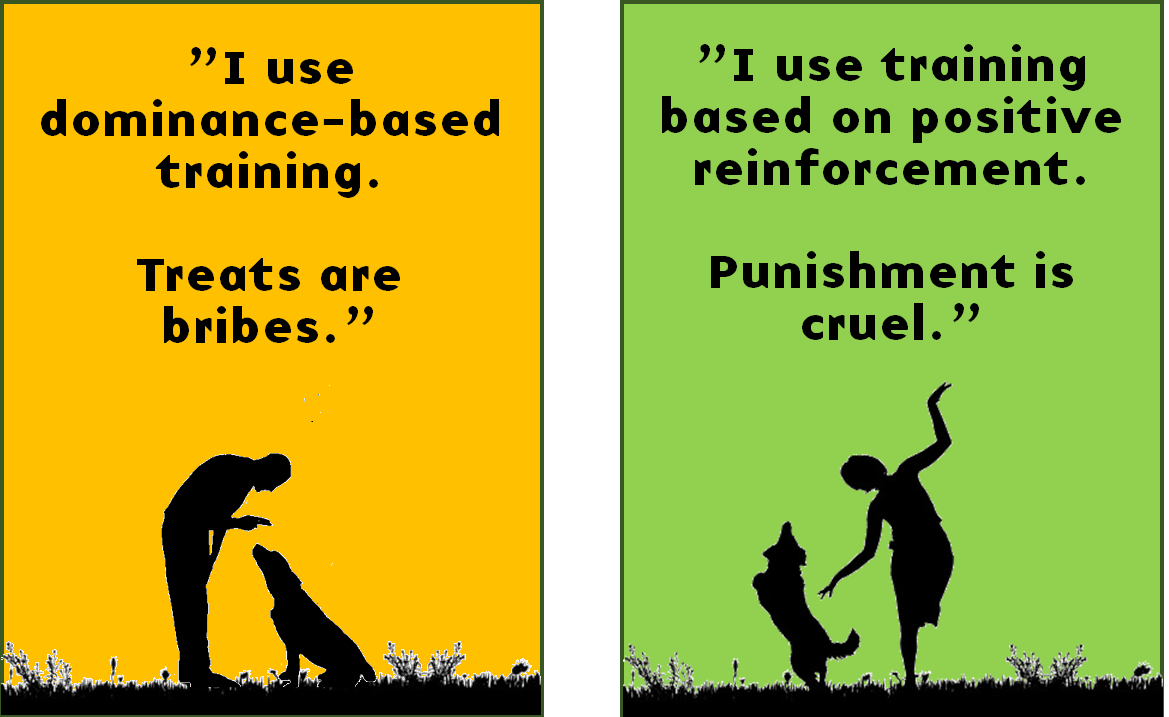

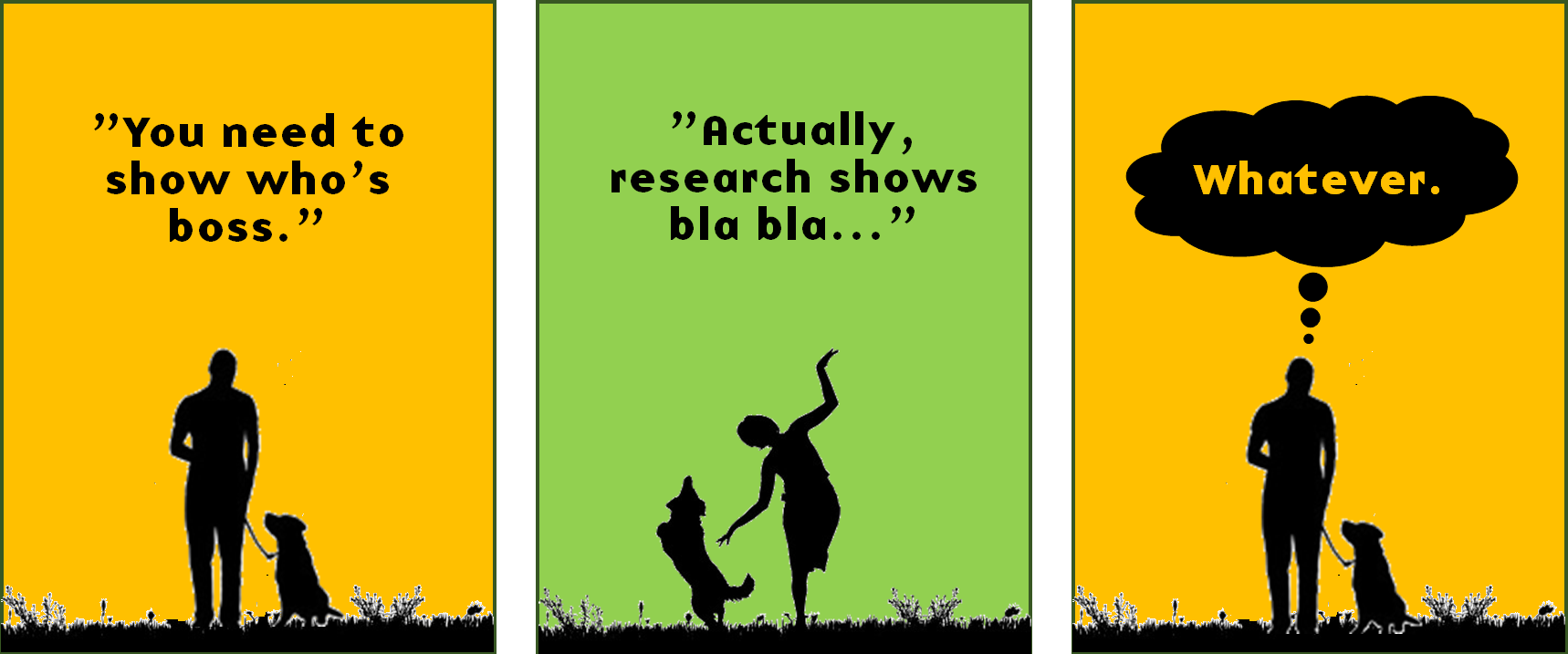
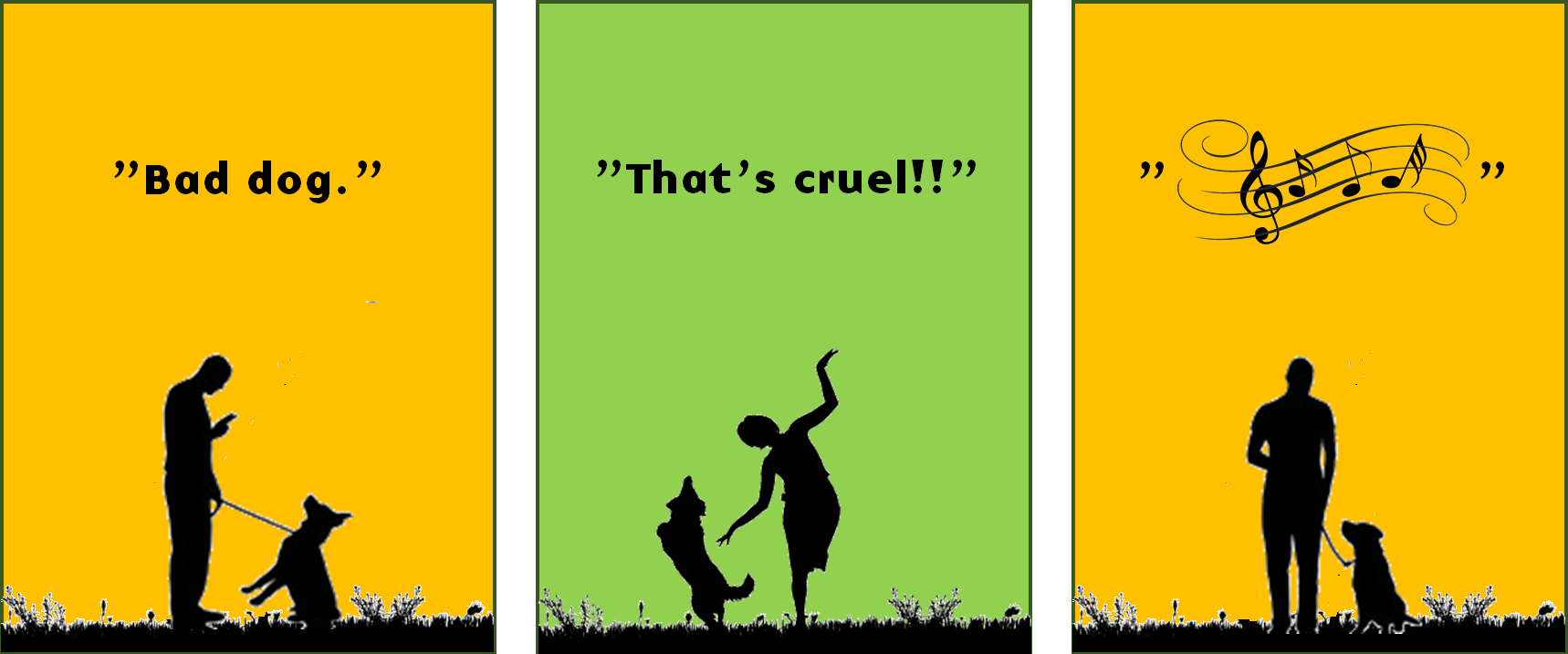
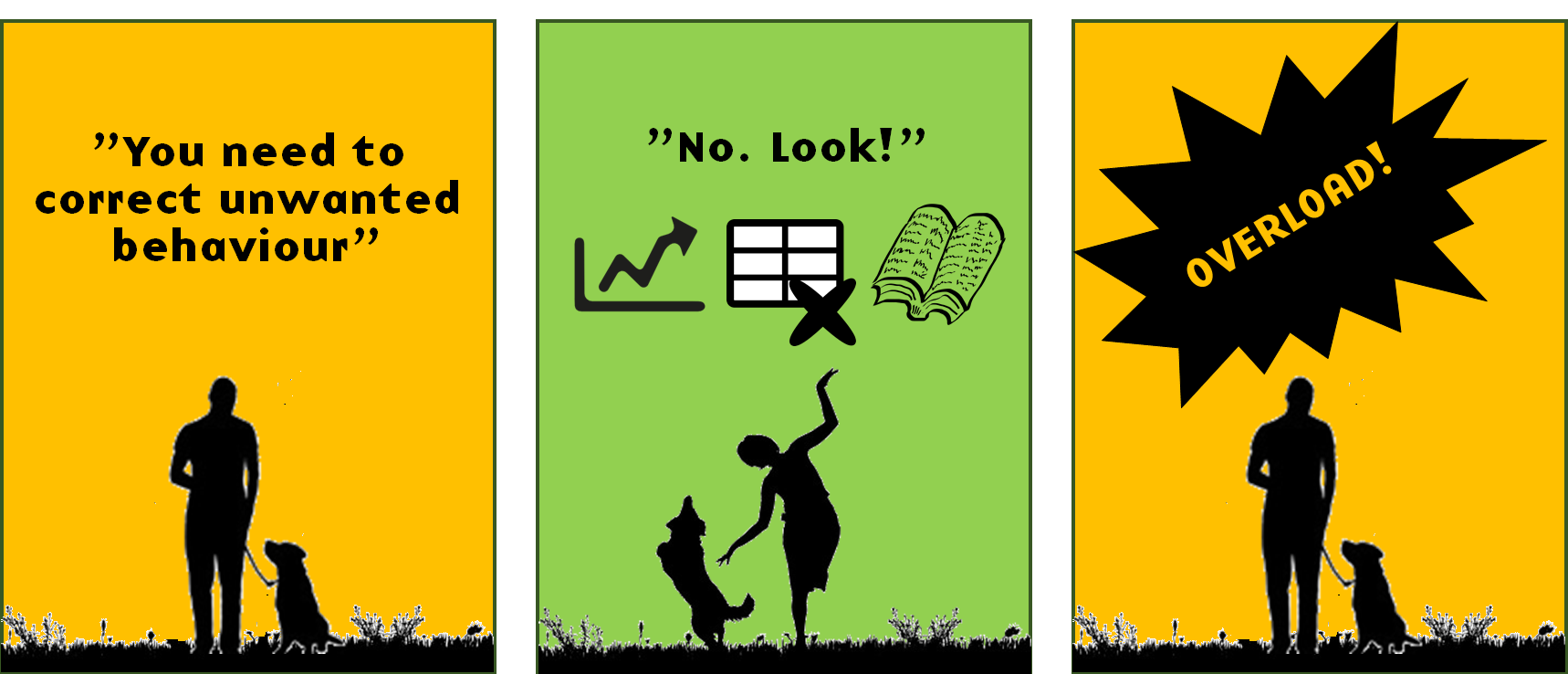
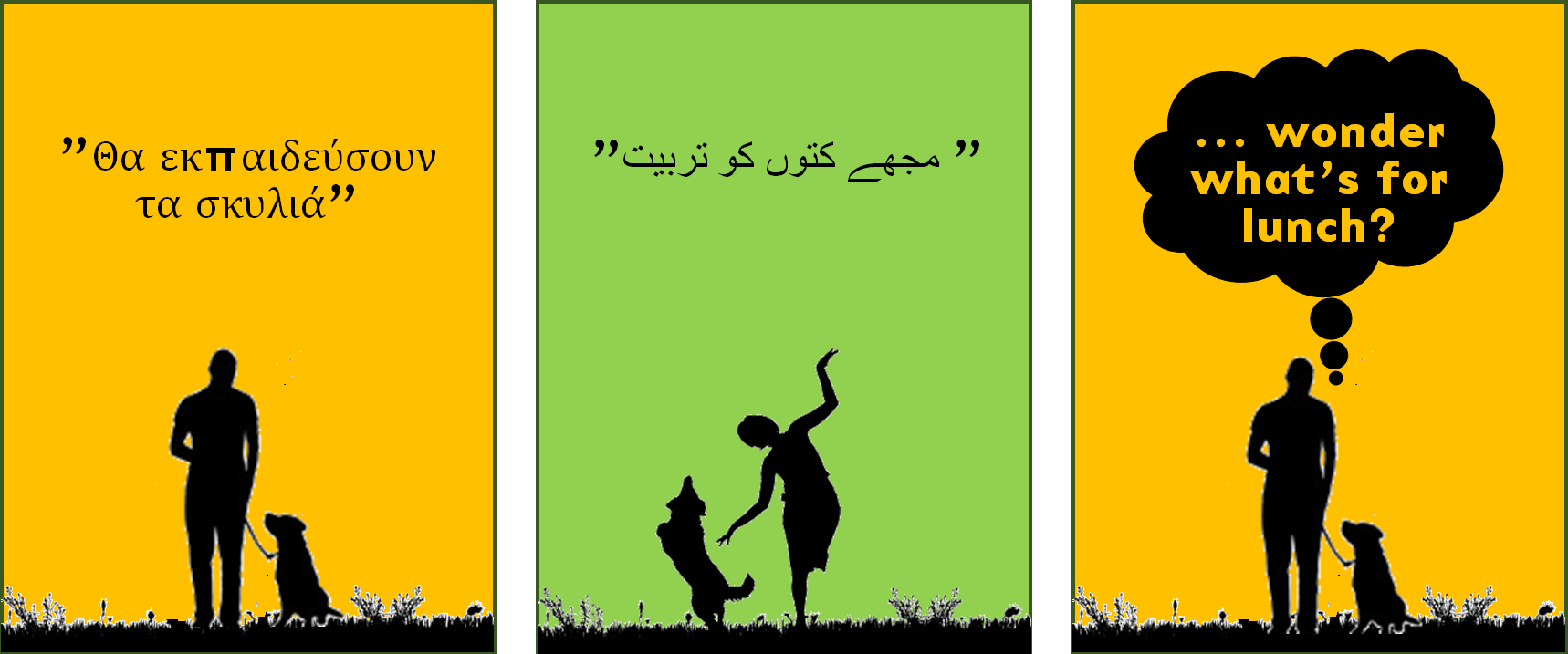

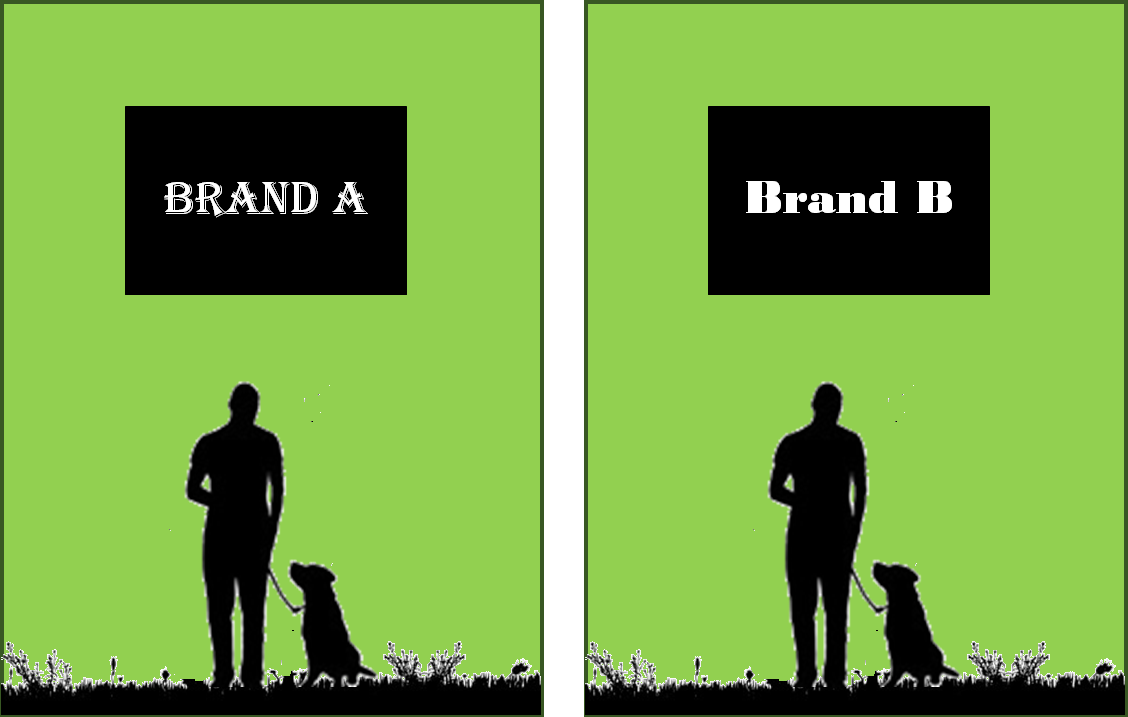
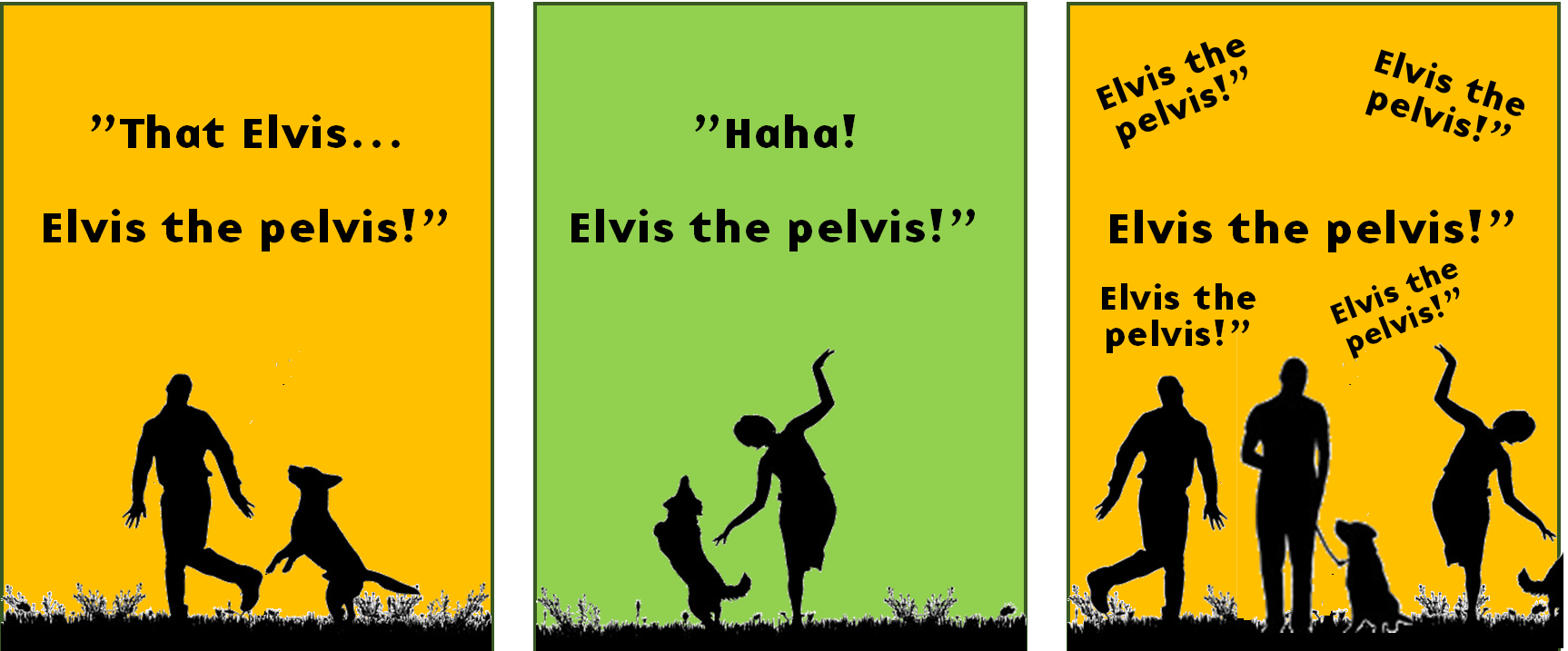
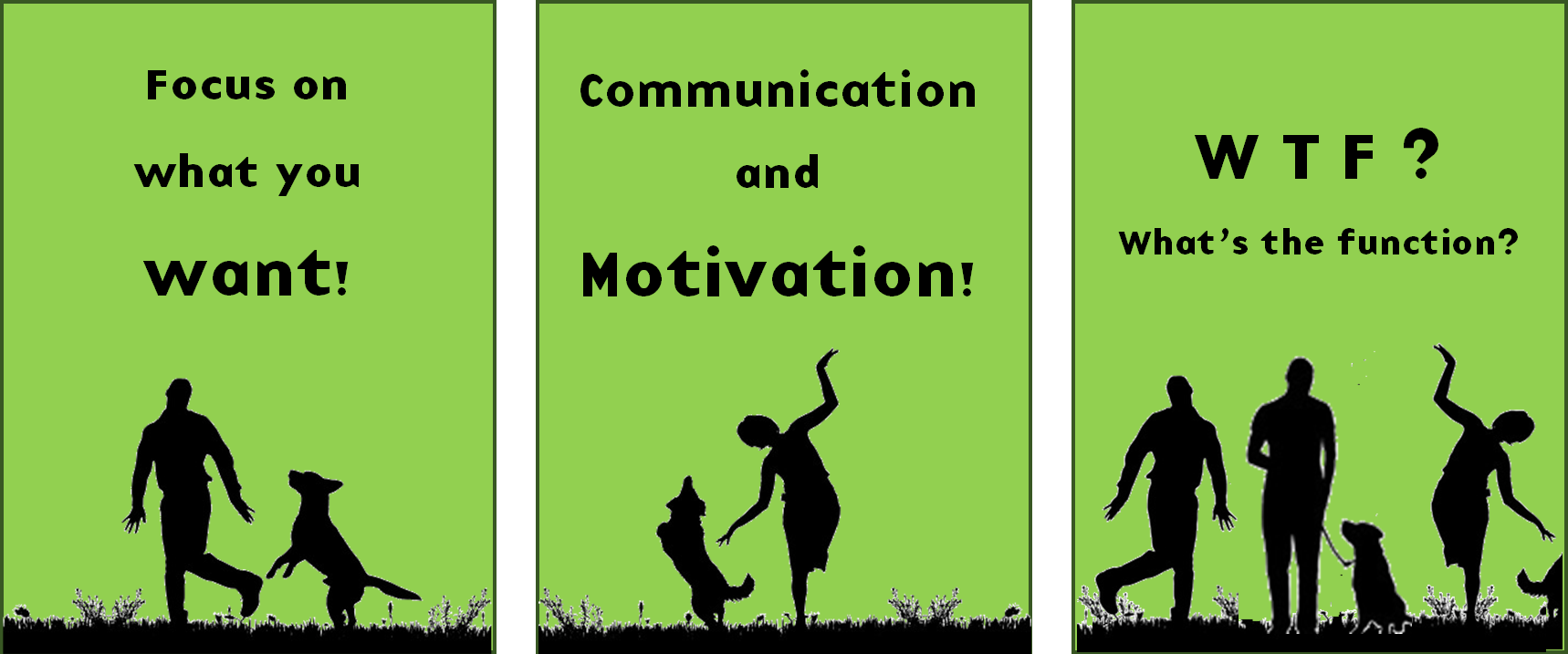
67 replies on “WTF?”
I like the idea!
What I find problematic is “dog schools” saying they use positive methodes and even their name suggests dog welfare. But when you ask them how they do it spesifically, they would attack you. (Get a obedient dog in 7 weeks…). Have seen the results of dogs attending…..
Hopefully we are moving forward, albeit slowly…!
[…] Use memes to make your ideas familiar. […]
I say to clients “If you like, reinforce it and you’ll get more of it!”
Great, to the point and simple – I like it! 🙂
“What you pet is what you get”
Is a simple statement that pet parents seem to get. This then opens the door to define what “petting” is from the dog’s point of view,
Good one! Rhymes are great – makes a meme stand out, for sure!
What an interesting and inspirational read!! Thank you for sharing your insights!
Glad you liked it, Frank! 🙂
Very interesting post.
When you talk about the two factions, I think there’s yet another, which is rarely considered. Those are the people who don’t think about formal training of any kind.
So they are doing any old thing with their animals, including whatever’s trending on YouTube, books, websites, etc. It’s haphazard and I should know – I was one of those people.
I didn’t even know that there were different schools of training when I first got a dog. It didn’t occur to me and I wasn’t exposed to it. I followed people with no qualifications. To my shame, I watched them do some of the traditional punishments and even did one or two myself.
It felt wrong but I had no idea there was an alternative.
Are ‘non-trainer’ owners part of the two-camp dichotomy? I think not!
I think they are the vast majority of pet owners. I think our task is to offer them the magic of R+ training.
This is as big an issue as the two-camp problem, and I don’t see anyone applying themselves to addressing it.
Even animal activists are ignorant of any kind of training…in fact, I’ve heard people who fight hard for things like abolition of hen battery cages tell dog trainers that they are teaching their animals ‘demeaning tricks’.
The need is huge; you’ve only got to listen to talkback radio when a dog trainer or behaviourist appears. Or read Facebook dog training groups.
People are confused, overwhelmed and don’t know how or where to start. There’s the real risk of the people giving up and the dogs being damaged or even rehomed.
What we don’t bother doing is showing people where to start. What schools are good schools with modern training. Memes are a good idea but I’m not sure they can start much change; slogans are great, too, but people need practical help.
I began my training journey with one of KPA’s online courses, which are great. Or you can do short courses through Fenzi Dog Sports Academy (not at all only dog sports). Or read this wonderful article by Zazie Todd about how to choose a dog trainer:
https://www.companionanimalpsychology.com/2016/12/how-to-choose-dog-trainer.html?fbclid=IwAR2NwWd1NtetHHNLAzq8rcmFkyAwoi8DlC1QJtbt9gaZPYr4wSctRwFd5RE
To summarise: ‘non-training’ owners should be a target for us trainers. We need to show what’s to be gained with training; we have a long way to go with our message of modern dog training.
[I’m sorry for the length of this reply.]
Don’t be sorry, you’re making a great point! 🙂 I think most of us came from that “camp” at some point… from completely oblivious to discovering this new world. I do think people are spreading the world, but change is slow… we see change though, if we look at the long-term changes (years rather than weeks or months). A lot has happened in the last 10 years! 🙂
Thanks Karolina. I still think we must do better, as a matter of urgency.
How? I’ve no idea.
The only time I’ve had a genuine conversation with a dog owner has been in the quarantine period, with all the new puppies and rescues.
People seem to want to listen and talk only when things are at an extreme, when behaviour is unmanageable.
I would like to see local governments or councils give mandatory dog education sessions before granting a licence. In Australia, these authorities register dogs and cats.
PS I like the texts but would love to see ‘adorable’, eye-catching dog photos in the memes
Wow I love your reply and agree. I too was one of those dog owners and i feel shame and guilt that I subjected my dear sweet dog to even one aversive act. But I do wonder if memes—or similar short repeated idea/message— could actually b helpful. B/c the goal is to get dog owners not training their dog to realize how necessary—and beneficial and humane and kind—training our dogs is. What came to my mind is slogans like what I’ve come across in my own psycho-social education path. For example, from evidence-based chronic illness (active) self management workshops, the concept that we can take action to self manage, or we can choose to not take action, but both are choices we’re making, even if the latter is passive. The point being that we all are self-managing every day, even if we’ve never heard about it until the workshop. And so if we have already been doing the passive self-managing (doing nothing, avoiding), the idea of active self-managing doesn’t seem too foreign, or much of a stretch. Then we might b able to look at our (passive or not entirely active?) self management to date and agree we’re not happy w the results, or at least see that there’s room for trying an alternative. What if all the dog owners who haven’t trained [or havent followed an explicit training protocol ie they’re’training’ whilenever having learned anything about dog training?] could see that there is training ( ie dog is learning) going on constantly, even if they’re not doing so actively. Then mght they b more likely to consider doing formal, evidenced based training? B/c then they r actively directing what their dog is learning? Then memes could show a. what dog learns when u yell at them to stop barking, vs b. when u use redirection (or ?).
Trying to address what I observe in most dog owners I meet—neighbours, folks at the dog park next to my home, owners of dogs I walk and board (kennel/crate free)—either or both that 1. A ‘well behaved’ (in human terms) dog just happens, 2. Training dogs to b ‘well behaved’ is so ‘natural’ or ‘obvious’ that a. they don’t need to know anything about training dogs/how dogs learn/dog body language and or b. just by interacting w their dogs daily and using whatever info or myths or assumptions they have gathered and believed, the automatic and only result is a ‘well behaved’ dog. There’s an absence of responsibility or desire so strong to avoid—facing learning, being wrong, facing unknown, being engaged, doing difficult thing, not immediate gratification, resent/refusal to spend time on their dog—that they’ll tell themselves anything so they can avoid actually training? Sorry maybe Ive wandered as I said im beginner her.
Just a thought. Im not a trainer, just beginning the path.
Thanks for sharing your thoughts, Laila! I’m thinking the value of memes is to bring about familiarity, not to teach. Simply a first step so that certain concepts become familiar – the teaching needs to happen in another forum (although I try to add some explanatory texts to the memes I publish, they are not a particularly good teaching tool)
I’m surprised that I haven’t seen this one yet.
Reinforcement Drives Behaviour
That’s a great one! 🙂
“Behaviour that gets rewarded, gets repeated” – sums it all up for me both as a (hobby) animal trainer and as a teacher of primary school children.
“Focus on what you want and not on what you don’t want” is another, but a bit harder to achieve somehow.
both of those are great reminders! THanks for sharing! 🙂
I like Kathy Sdao’s “See, Mark, Reward, Training” it is easy for the clients to remember and understand and it focuses the client/ owner on rewarding behaviors that they like.
Keep sessions short and sweet.
If you want focus be focused.
All behavior is communication
Plan, prepare, teach, evaluate, repeat
You get more of what you reinforce
So if it isn’t what you want, time to look at what you are doing.
Great examples! Kathy is a great inspiration for pithy quotes! 🙂
I love this post! Please continue!
These are the discussions we need….
[…] What I’m suggesting is that we help them start where they’re at, and consider “teaching-positive-reinforcement-to-a-transitioning-horse-trainer” as a shaping procedure. It has the added benefit of being a non-confrontative approach that might make the trainer who’s still on the fence about trying positive reinforcement more likely to listen to and implement suggestions for change. […]
Create emotional capital
Creating feelings capital gives the possibility of withdrawal. I mean that if you made deposits with the animal and then create “trouble” for the animal it can be outweighed.
At least i think it is possible with rabbits, sheep, cats, dogs and horses.
[…] we can create a mass movement that can really help animals and their people! As I wrote about in this blog post, combining the power of social media with inherently viral memes could have a huge impact on […]
All you have to do is look at the competitive dog sport world of IPO, this is a pure reflection of the change in training approaches. Any 30 plus year veteran would tell you that if you line up the champion of yesteryear against the champion of today those of yesteryear would be left for dead. No doubt we have improved and no doubt the shift from the old school days of heavily compulsive methods to the heavily indusive and classically conditioned of today is more than warranted. However, when PP/FF extremists offer solutions like ‘just pen the puppy until they grow out of it’? I am forever dismayed and left to pick up the pieces. The motivational matrix is a representation of life on earth. Life which functions as a direct result of these 4 quadrants. To abandon one quadrant completely and place this idealogy above and beyond the welfare on an animal is terribly selfish and this is what I and many are encountering. It’s like in some cases people have shifted from one extreme to another?!?! Although striving towards a PP/FF methodology certainly can help create more techniques and potential to become a better trainer, (not to mention improving welfare for animals) but to actually put it into religious practice 100% is plain and simple irrational extremism at it’s worst…and yes, as some may have eluded, TIME is a variable which often needs to be considered in the companion animal world. That is TIME taken to create a manageable outcome. Equally offensive I find are restrictions on dog breeds or equipment like E-collars. The only restrictions should be the human at the end of the lead….unfortunately it’s always the human that is the problem. So, although I agree with much of what you say Karolina I do feel that it should be acknowledged that P+ in the right hands can actually make up part of a successful behavioural modification program. Tools like E-collars or ANY TOOL are only ever a problem in the wrong hands and are no more capable of misuse and abuse than a lead and flat collar.
Hi Gordon! It wasn’t my objective to discuss the intricacies of P+ in this blog post – but I actually do that here, including mentioning when I think P+ would be appropriate: http://illis.se/en/punishment-problems/
Hmm I need to re-read this and see if I really come across as extremist – not my intention – thanks for pointing it out!
… I actually changed the wording on my positioning in the blog post..! 😉
Thank you for this blog post!
“EMPOWERMENT in training ROCKS!”
“HAPPY animals engage”
“Catch it WHEN you get it”
“Have FUN – train friendly”
I love Winston Churchill’s way too long but…. :
“Nothing is impossible – The impossible only takes longer”
Have a nice day!
nice! 🙂
Spreading propaganda in small doses isn’t going to change the opinions of the learned. I’m happy to discuss methodology with anyone but I find the contrary happens to what you state; it is the purely positive trainer that leaves the conversation when it is pointed out the scope of the studies to which they rely are being touted out of context to make blanket statements against the use of any aversives. Many have no working knowledge of the topic and when presented with facts the cognitive dissonance kicks in. A study is just data being collected and analysed to create a hypothesis; the hypothesis is only as good as the data collected and the analysis. Until that hypothesis is tested it remains unsubstantiated. I don’t label myself as any one type of trainer; I use all within my skill set to achieve the best results for my client; like most trainers, the majority of my methods are positive reinforcement based, but I will not hesitate to use positive punishment or negative reinforcement if the situation dictates for the safety or greater good of the dog and my client. The end result is the test for training methodology, not the trumped up propaganda; the proof of the pudding is in the tasting.
Thanks for this – interesting on many levels!
– Mere exposure impacts preference. “Propaganda” works, values shift with familiarity for the majority of people. Perhaps learning will affect the probability of such a preference shift, I don’t know. Perhaps not.
– I consider myself reasonably learned, and I have a lot of pompous letters to my name nowadays. But I’m a lot more humble today as an Associate Professor, than I used to be as a budding phD student. Today, I’m aware of (some of) the limitations of my knowledge. I know the difficulties of overcoming cognitive bias, and I consider the ability of changing opinions a strength, not a weakness.
– As a scientist, I agree that we should question circular or unfounded reasoning. However, the issue of animal welfare is value-laden and different scientists emphasize different perspectives, typically health, happiness or telos. Thus sometimes agreeing to disagree is the only option at any given time – until a frame shift has occurred.
– I this blog post, I portrayed the most extreme positions among animal trainers. However, a lot of people will find themselves somewhere else along the continuum, just like you – and I. Many trainers follow the LIEBI approach, saving positive punishment as a last resort to address problem behaviour, when no other approach has worked. That said, most LIEBI proponents consider punishment very problematic given the huge number of potential, serious, side effects.
I would like to step up to your comment on Leibi and by extension, LIMA and Humane Hierarchy, and this whole issue of “humane” training. I have walked both extremes of your training paradigms and I want to suggest that we have stopped looking at the real issue here. We have forgotten to ask the learner about what is important to them. I have seen food used to manipulate animals to do things that are neither in their best interest nor of relevance to them. They have in effect, been forced into behaviour they should not do in order to get food. I have also seen animals forced through pain and fear into the same. Conversely, I have seen animals learn in a single iteration to accept situations that ARE in their best interest and that will improve their welfare through one unpleasant application of an aversive. I have also seen animals learn easily through positive reinforcement. So why then do I say that I think you are looking at the wrong issue?
Simply because when learners can learn efficiently and effectively, and with a minimum of distress, then the learner can get on with the business of living his life and using skills to better cope with what he faces. Consider for a moment the dog who jumps up on counters to eat things left there. This is a situation faced by millions of families and results in dogs who eat things such as chocolate or medications that result in the dogs being hospitalized or even dying. I can solve this for a client in ONE repetition with the use of a strong aversive, well timed and seeming to have nothing to do with the trainer. I can and I have. The result is a happy owner and a dog who is safer in his own home. I can also take a long, long time and work really hard and eventually teach a dog to stay off counters through a process of R+ training. The fact is that counter surfing is faster and easier to resolve with P+. Some things are like that. OTOH, it is MUCH easier to teach something like come when called with R+. Yes, I can and I have taught this using R- and P+, but why would I when the very large majority of dogs learn this much faster and easier with R+? Some things are like that too.
We have gotten all tangled up in politics. I am an educated and very experienced trainer. I have trained at both ends of the spectrum. I am no longer interested in discussing which end of the spectrum is better; I am interested only in helping teach folks to recognize when their learners are relaxed and happy, and to recognize when an intervention is working and when it is not. I challenge you to change your frame again. Ask the learner. What are they telling you? Do they understand what you want in a few repetitions? Because if they don’t, then you doom yourself to frustrating yourself as a trainer, and your learner. That just isn’t much fun at all.
Sue, you’re making a great point bringing in the practical perspective – and asking the learner. I think we’re living in a paradigm shift, where attention to the animal’s happiness, choice and control are becoming more and more important. I see this shift occurring in the R+ camp, not in the dominance-based camp.
I’m a welfare scientist and a lateral thinker, I hardly train animals – certainly not at the level comparable with many of my readers. My perspective is animal welfare, and when looking at behaviour from that angle, I’d rather find other solutions than P+ to keep the dog off the counter. However, when the practical perspective and the risks are taken in, I can certainly understand your decision to go down that path. I would have one concern apart from the risk of side effects, and that is that the clients might copy that technique and use it less skillfully and in other contexts. YOur role as an authority for your clients can’t be underestimated, I think.
This blog post was meant mostly as a discussion point on how the reinforcement-based community can communicate more effectively about training, rather than the advanced details of when punishment may be appropriate, or when treat feeding may be inappropriate – I was very inspired by that conference! 🙂
I agree with you. I use what I think will work in the moment, be it R+ or an alpha roll or poke (Cesar). Each dog is unique and you use the appropriate tools accordingly. I don’t use e collars or choke chains, but teach leadership for dog owners to be calm and assertive. Meet and surpass the dogs intensity. I am a Pack Leader.
While I agree that the constant bickering needs to stop and is, in the long run, harming dogs, your bias towards one discipline becomes obvious very quickly into the article. If you were to restrain from inputting your personal training style bias in the article it would be much more powerful. As is it seems as much a training poster on how to convert others as it does an olive branch extended in a gesture of peace.
Thank you for this comment!
It really made me think: what was the objective behind this post? An olive branch? Or a one-sided call to action?
Remaining neutral is hard when you have made up your mind, and I have. I’m not indifferent to the outcome, I’m passionate. As I think most trainers are, regardless of which side we subscribe to.
I’m not merely interested in having both sides lay down their arms so that we can communicate effectively, since I believe animals are suffering because of this deadlock, and I don’t think that suffering will end if we don’t manage to convert the *other* camp. Rather, I’m interested in how *my* side can stop offending, overwhelming and evoking guilt when speaking to the dominance-based camp.
I think we already have the “mere exposure effect” of the dominance-based camp, thanks to some television programs and our cultural upbringing. The equivalent is missing in the positive reinforcement- camp since we’re not speaking with one voice, and we’re often using an accusing tone of voice when we try to convey our position.
So, rather, perhaps I should have been more clear from the beginning of the post: it was a call to action for the positive reinforcement camp – sorry if I started out by appearing neutral on this topic.
I don’t think the dominance side lacks any R+ at all. We just use more tools to achieve balance. I think it depends on the animal. I only train dogs, so that is my expertise and in doing so, I think you can’t just ignore the benefits of some styles, only because it seems too harsh or aggressive. I’d like to think I talk dog. I have watched a pack of dogs (15-20) daily now for almost 15 years. They attend weekly and half the pack attends Mon-Fri and are my core pack. I see the hierarchy, the dominant, the leader and controller, and I have seen all those in one dog at one point. I establish and enforce the rules but don’t think its up to them to only learn our language as much as we should learn theirs. And dogs are physical beings. Touch in a gentle way and also as a correction is very effective. JMHO
I love this blog! It’s a Mashup of my two current passions, behavior science as it is applied to dogs and politics. (I might have left the expected comma on purpose.)
How about:
Changing the environment changes behavior.
Nice! Both the meme and the subtle reflection on dogs and politics… 😉
Fear of the unknown – –
Familiarity helps
When paired with kindness
Ohhh. That one was nice!
“Break it down!”
As in, break down the behavior into small pieces for shaping. Or, alternatively,
“Split it!”
Or clever plays (to be determined by someone wittier than myself) on existing phrases such as
“Make like a banana and split”
“Split the difference”
“We’re splitting up”
“Lickety-split”
“Split hairs”
Etc.
Excellent, excellent post by the way. I really enjoy the reads that give you a lot to think about. Will be saving this post (and your blog in general) for future reference! Thanks for writing!
My first thought was “Rather split than lump?” as an alternative but perhaps it’s better not to mention the don’ts.
Great suggestion, to throw out a handful of similar suggestions, and see which sticks.
Glad you like the blog! 🙂
“What you bridge is what you get”
nice one – heard that before as “what you click is what you get” – but this has wider application!
If the journey is fun, the results last.
Nice one – haven’t heard that before!
Wonderful and compassionate approach to everyone well done! I just gave a lecture on this very idea in my Animal Training 101 class on line yesterday so we must all be circling around very important truths!
Here are some of my favorite memes “Always, come bearing gifts!” “Set the animal up for success” ” Train as fast as you can but as slow as you need to”
and finally, most appropriate for this post “Positive reinforcement, it’s not just for animals!” 😉
Nice additions, Jenifer! I’m sure you noticed I really like your “communication and motivation” approach to animal training…!
“Acknowledge wanted behaviour”
“Try to bend unwanted behaviour”
Great blog! Thanks from Holland Will share of course
nice! …. bend the unwanted – interesting!
Great post! Great conference summary. Yes, definitely to creating memes!
thanks to speakers like you, not a dull moment! 🙂
‘Start with simple’
Consider basic needs – diet, exercise, sleep……
nice!
“What’s the emotion/feeling?”
A reminder to step into your animals shoes and think about how a situation or a behaviour feels to them and what we can do about that feeling, especiallt if the feeling is unpleasent for them. A notion on respect and empathy 🙂
Good one! This list of comments is getting to be quite the collection of gems! Thank you!
[…] Illis – How we talk about dog training […]
Excellent blog. Nothing else to say except, I will be sharing.
Thanks! 🙂
‘Name it when you love it’ has stuck in my head since I heard it. I know it is 6 words but 2 are the same! Also ‘the animal is always right’. Great blog. Thank you
Nice! 🙂 Love “the animal is always right” – it packs a lot of information – and it’s a good reminder when things go “wrong”
Thank you for sharing Karro !
I´ve heard about the conference and I wish I had been there with you.
I can only agree and I will think about what memes I like best and share !
As I have lived most off my life in the outskirt of one frame and lately totally moved to the other it felt like “I stepped out of the closet” as I never really belonged in the -R frame. So I meet now the width off the gap in between the two frames. I´m just odd, why am a so weird, have i lost my mind …..or people just turn away. I´ts a bit lonely in my new frame and I do wish memes or whatever may get people together but it´s so easy to turn your back to what you don´t know . <3
Thanks for sharing – I realize transitioning can be a scary and lonely place, and we should learn to be supportive of people who are in other frames than ourselves… let us know if you come up with any good memes! 🙂
Welcome in the “the animal is always right” frame! So much fun here!
If you can’t explain it the dog can’t do it.
(Just because I’m forever seeing people – regardless of camp, or frame – trying to build behaviors in their dogs without even having a goal in mind… )
Great one! In Tag Teach they say “five words or fewer”, referring to the actual specific criteria for the next repetition.